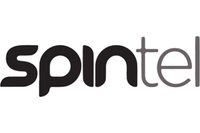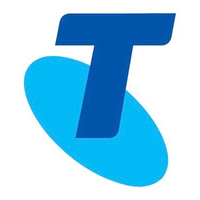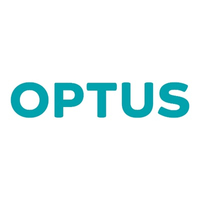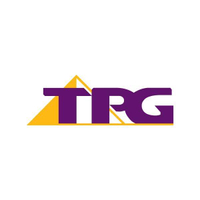Best NBN plans July 2024: our expert picks
We compare the best NBN plans from over 30 NBN providers
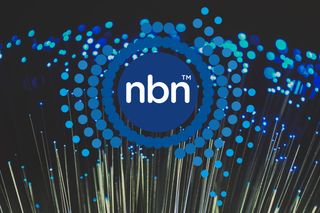
1. The list in brief
2. Best provider
3. Major telco plans
4. How we choose
5. NBN FAQ
If you're looking to compare some of the best NBN plans, you've come to the right place. Every month, we line up the best NBN deals available and give you our expert recommendations for all kinds of NBN plans, ranging from the 'basic I' 25Mbps tier to the 'ultrafast' 1,000Mbps tier.
Once you know which NBN connection type you have (i.e. FTTP, FTTN, FTTC or HFC), you can find the right plan for you. Typically, this choice is dependent on the speed tier you're after. You could need a simple NBN 50 plan for you and your partner, or at least 250Mbps or more during the busy evening hours to keep the whole family connected.
For us, the two biggest factors in determining a good NBN deal are speed and price. Most ISPs offer some stellar introductory discounts over the first six months for new customers, but in rare cases, you could score savings over the first year.
That said, most ISPs are introducing price hikes thanks to the recent NBN Co wholesale changes, so it's more important than ever to find a quality plan that'll provide decent service for your hard-earned dosh.
Here at Tom's Guide, we regularly monitor and compare over 30 NBN providers, highlighting some of our favourite picks below. But enough waffling — scroll on to check out our recommendations for different speed tiers, best value and more, this month.
The best NBN plans in Australia
Below you'll find a roundup of our picks for the best NBN plans in Australia right now. We've made selections covering all speed tiers, specific uses and budgets, to help you find the NBN plan best suited to your household.

Best value NBN plan (NBN 100)
• AU$68.90p/m (for 3 months, then AU$78.90p/m)
• First year: AU$916.80
• Ongoing: AU$946.80
Slashing a massive AU$30 off the first three months, this Kogan NBN 100 plan is a pretty damn good deal. One of the biggest perks of signing up for Kogan's Gold Unlimited plan is getting to cash in Qantas Frequent Flyer points, as you'll earn 1 point per AU$2 spent.
With advertised speeds of 90Mbps during the busy evening hours, this plan doesn't quite reach the magic number like most plans on this tier do. However, what other plans won't offer you is Kogan's Internet Price Pledge, where if you find a better price on the same NBN plan from an eligible major provider, Kogan will give you back double the difference. What a win for you (and your wallet!).

Best NBN plan for gaming (NBN 100)
• AU$75p/m (for 6 months, then AU$89p/m)
• First year: AU$984
• Ongoing: AU$1,068
Superloop's NBN 100 plan is our pick for gamers this month, as it advertises 95Mbps typical evening speeds and offers affordability by NBN 100 speed tier standards. But the standout to us is the fact that you'll nab five free Speed Boost days so you can skyrocket your online play to the next speed tier of NBN 250.
Any unused days rollover and you can bank up to 30 days, which you can save for bigger game downloads or any occasional patches you want to save. And if you stay connected for 18 months, you can even score a free Amazon eero6+ router.
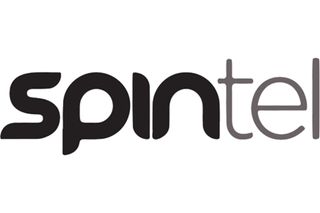
Best NBN plan for streaming (NBN 250)
• AU$75p/m (for 6 months, then AU$85.95p/m)
• First year: AU$965.70
• Ongoing: AU$1,031.40
Spintel's NBN 250 plan price matches the average of an NBN 100 plan. Saving AU$10.95p/m for the first six months — that's AU$65.70 — this 250Mbps Spintel plan is perfect for larger households with multiple devices. Advertising 211Mbps during the typical evening hours of 7pm to 11pm, this plan will offer plenty of internet (and speed) to stream everything and anything.
While it’s unlikely to reach the theoretical maximum of 250Mbps that this speed tier offers, we don't think many will miss the 39Mbps, but we understand that some consumers expect to get what they pay for. Also, keep in mind that this NBN 250 plan is only available for addresses with FTTP and HFC connections.

Best NBN plan for heavy users (NBN 1000)
• AU$99p/m (for 6 months, then AU$109p/m)
• First year: AU$1,248
• Ongoing: AU$1,308
Superloop's 1,000Mbps NBN plan is our pick for heavy internet users. It currently advertises a massive 811Mbps typical evening speeds — which are among the highest advertised for this tier — and it’s affordable by NBN 1000 speed tier standards, costing less than some slower 250Mbps NBN plans. Do note though, that you will need either an FTTP or HFC connection to sign up for this plan.
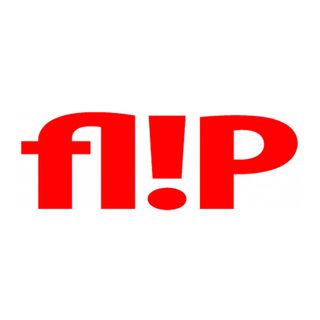
Best NBN plan for light users (NBN 25)
• AU$39p/m (for 6 months, then AU$57.90p/m)
• First year: AU$581.40
• Ongoing: AU$694.80
Flip's NBN 25 is perfect for light internet users. It's the cheapest 25Mbps NBN plan in the country, with an introductory offer of AU$44 a month for your first six months, before increasing to an ongoing rate of AU$54.90 each month. You also get unlimited data and a maximum of 25Mbps speeds during the busier evening hours.

Best NBN plan for large households — 4+ people (NBN 250)
• AU$95p/m (for 6 months, then AU$105.95p/m)
• First year: AU$1,205.70
• Ongoing: AU$1,271.40
Spintel's newest offering has landed in the top spot for multiple users, as it boasts a massive 650Mbps — which is more than enough internet for larger households. That being said, it is on the smaller side of the NBN 1000 speed spectrum, so do take it with a grain of salt before signing up.
If you need slightly faster speeds, however, you could also consider Superloop's NBN 1000 option for a similar pricepoint and 811Mbps advertised speeds.
Which is the best NBN provider?
Best NBN provider this month — Spintel
Spintel is our best NBN provider this month, thanks to its seriously fast speeds and damn good value. Not only does it have some stellar introductory offers, it's also a perfect choice for gamers, remote workers and streamers alike. The telco has garnered some positive reviews online, with consumers praising easy installation and friendly support teams.
Best NBN plans: major telcos
When searching for NBN plans, you may be inclined to automatically look at the three major telcos of Telstra, Optus and TPG. But most of the time, these three are usually among the most expensive options. However, if you do sign with any of the major three telcos, you are likely to get a reliable and high-performing service, and this is backed up by reporting data from the ACCC.
What's more, Telstra and Optus often throw in additional perks for free. Such benefits include modems with 4G data backup, allowing you to stay connected if your fixed line NBN connection suffers an outage, as well as free trials to various streaming services.
If you’re looking for an NBN plan from Telstra, Optus or TPG these are our plan recommendations:
Best Telstra NBN plan for most people
Why you can trust Tom's Guide
Telstra | NBN 100 | Unlimited data | No lock-in contract | AU$105p/m (for 6 months, then AU$110/month)
Telstra’s 100Mbps NBN plan is the most expensive right now, based on our research using data from WhistleOut. As this page has already shown, you can get much cheaper by shopping around. But, as we've also said, you do get additional perks with Telstra, such as free trials to various streaming services, including Spotify and Binge.
Total minimum cost: AU$105 | Total cost for first year: AU$1,290
Best Optus NBN plan for most people
Optus | NBN 100 | Unlimited data | No lock-in contract | AU$89p/m (for 6 months then AU$99p/m)
If you're a fan of Optus, then this deal may be your best bet. Slashing AU$60 off the first six months before the price increases, this fast plan advertises 100Mbps during the typical evening hours.
Do note, though, that the plan will increase to AU$99 p/m after the discount period ends, which is higher than the average cost of this speed tier of AU$91.15 p/m.
This plan's minimum cost is AU$395, as it includes the modem; however, you won't pay any additional fees for the modem if you remain connected for 36 months or more.
Minimum monthly cost: AU$395 (including modem fee) | Total cost for first 12 months: AU$1,128 | Yearly cost after discount: AU$1,188 (excluding modem)
Best TPG NBN plan for most people
TPG | NBN 100 | Unlimited data | No lock-in contract | AU$79.99p/m (for 6 months, then AU$89.99)
While it's technically the cheapest of the big three, TPG's 100Mbps NBN plan has been on the receiving end of a AU$5/month increase within the past 12 months. We feel we could recommend it even more had this increase have not been made. Regardless, TPG does advertise good speeds, even during the busy evening hours, and there's no early exit fee. You do need to pay an upfront cost for a modem if you need one. And as we mentioned earlier, there are no additional free inclusions on a TPG NBN plan.
Total minimum cost: AU$179.94 (includes modem) | Total cost for first year: AU$1,019.88
- Telstra vs Optus NBN: who has better broadband?
- Want to see other NBN plans? You can use our NBN plan finder to compare a huge range of Australian NBN plans
How we choose
How we judge the best NBN plans
To select our picks for the best NBN plans, our experts consider and weigh the following key aspects for fixed-line NBN plans:
Speed: Each speed tier indicates the maximum speed available, for example, an NBN 50 plan is able to reach download speeds of 50Mbps. However, not every provider will be able to reach the maximum speed available during the busiest evening hours, which fall between 7–11pm. NBN providers are required to report their typical evening speeds, so we first look for plans that advertise the maximum speeds during these busier hours. For the Ultrafast NBN 1000 plan, no provider currently advertises the theoretical maximum. The fastest speed we've seen advertised so far is Telstra's 700Mbps.
Price: Price is perhaps the most important factor in our decision making. We initially look for the cheapest plans across each speed tier, and then if we don't think the download speed is worth it, i.e. it's too slow, we'll then look to the next cheapest to see how it compares. The majority of NBN providers offer 6 month introductory discounts on their plans, and these prices can sometimes be deceptive. This is why we give you information relating to the yearly cost you can expect to pay once that introductory discount expires.
Data allowance: The majority of fixed-line NBN plans offer unlimited data, so in all but exceptional cases, we only recommend plans with an unlimited data allowance.
Performance: The ACCC monitors the performance of some of the top NBN providers in Australia, so we always take this data into account when making our recommendations. If the ACCC doesn’t monitor a particular internet provider, we also look at feedback provided by real users on sites such as Whirlpool.
Perks: We consider perks as nice to have, but they carry less weight compared to other factors in our decision making. Some examples of perks include Australian-based customer support, or the ability to include a home phone service. Other perks can enhance the performance of your service, such as the ability to bump your plan’s regular speed up to the next available tier on five days of your choosing – a feature offered by Exetel and Superloop.
NBN FAQ
What is the NBN?
The NBN (National Broadband Network) is Australia’s national infrastructure for phone and internet services. The government initiative was first proposed in 2007 and was deemed to be 90% complete in 2020. NBN services are now available to virtually all Australians in some form, whether it be a fixed-line service, facilitated by optical fibre cables or a fixed-wireless service, which uses towers emitting 4G signals.
Which NBN speed is best for me?
NBN offers six main speed tiers for consumer connections. There are official names for these (ranging from ‘Basic 1’ to ‘Ultrafast’) but most providers refer to them as a number, relating to the expected download speed. The speed of internet service you can achieve at your property is determined by the physical connection type you have.
The six main NBN speed tiers available are:
NBN 12 (Basic 1): 12Mbps download | 1Mbps upload | All NBN connection types | 1 user | NBN 12 is best suited for a single-person household. Even then, the 12Mbps maximum download speed is only going to be good for browsing the internet, sending emails and watching video content in up to 1080p quality. If you want to stream 4K video content (or to multiple devices simultaneously) on services like Netflix, then NBN 12 likely won't be fast enough.
NBN 25 (Basic II): 25Mbps download | 5Mbps upload | All NBN connection types | 1-2 users | With NBN 25, up to two people can comfortably browse the internet at the same time and stream a range of music and video content in up to 1080p quality. You may be able to watch 4K streaming video, but only on a single device at a time.
NBN 50 (Standard): 50Mbps download | 20Mbps upload | All NBN connection types | 2-4 users | The most popular NBN speed tier, NBN 50 is designed to allow up to four users to browse, stream and download content with ease. NBN 50 is also a good speed tier for people needing to use video chat a lot at home. NBN 50 is the most popular NBN plan in Australia.
NBN 100 (Fast): 100Mbps download | 20Mbps upload | All NBN connection types | 5+ users | Well suited to 4K video streaming and allowing for multiple users to be online at the same time.
NBN 250 (Superfast): 250Mbps download | 25Mbps upload | FTTP, HFC connections | 5+ users | Incredibly fast internet speeds that allows multiple users to stream 4K video content and download large files at the same time.
NBN 1000 (Ultrafast): 1000Mbps download | 50Mbps upload | FTTP, HFC connection | 5+ users | Currently the fastest possible NBN speed tier, although very few telcos actually achieve the full 1000Mbps download speeds, especially during the evening.
What does 'typical evening speed' mean?
You'll see the term 'typical evening speed' advertised against all NBN plans, and it refers to the average download speed you can expect to realistically achieve during the busy evening hours of 7pm - 11pm.
Different providers of NBN plans may advertise different typical evening speeds, so be sure to keep an eye out for this figure when searching for a new plan. On speed tiers ranging up to NBN 100he typical evening speed figure is less important than it used to be.
The speeds realistically achievable in Australia have improved in recent years, and you'll now find some internet service providers will advertise the maximum possible speed of the NBN tier you're on. In some cases, your evening speed could actually exceed the theoretical maximum limit of your tier.
Which NBN provider is the cheapest?
The NBN speed tier you're considering will determine which NBN provider is the cheapest. A fast NBN 100 plan will naturally cost you a fair amount each month. But within these fast NBN plans, you can find some good deals that will save you money.
The cheapest NBN plan available in Australia is Flip Connect's NBN 12 plan, which costs AU$34p/m for the first 6 months, which then increases to AU$44.90p/m.
Head to our best NBN deals page for a regularly updated list of popular, affordable internet plans.
Is there an alternative to NBN?
Yes, there is, in the form of 5G home internet. 5G home internet uses a modem to connect to nearby 5G mobile towers, which then delivers internet around your home via Wi-Fi. It can have multiple benefits, including being easy to install, achieving superfast speeds and being competitively priced.
Other NBN alternatives include satellite internet for people who live in rural and remote parts of Australia and can't get connected to a fixed-line NBN service.
Sign up to get the BEST of Tom’s Guide direct to your inbox.
Upgrade your life with a daily dose of the biggest tech news, lifestyle hacks and our curated analysis. Be the first to know about cutting-edge gadgets and the hottest deals.

Lucy Scotting is a digital content writer for Tom’s Guide in Australia, primarily covering NBN and internet-related news. Lucy started her career writing for HR and staffing industry publications, with articles covering emerging tech, business and finance. In her spare time, Lucy can be found watching sci-fi movies, working on her dystopian fiction novel or hanging out with her dog, Fletcher.
